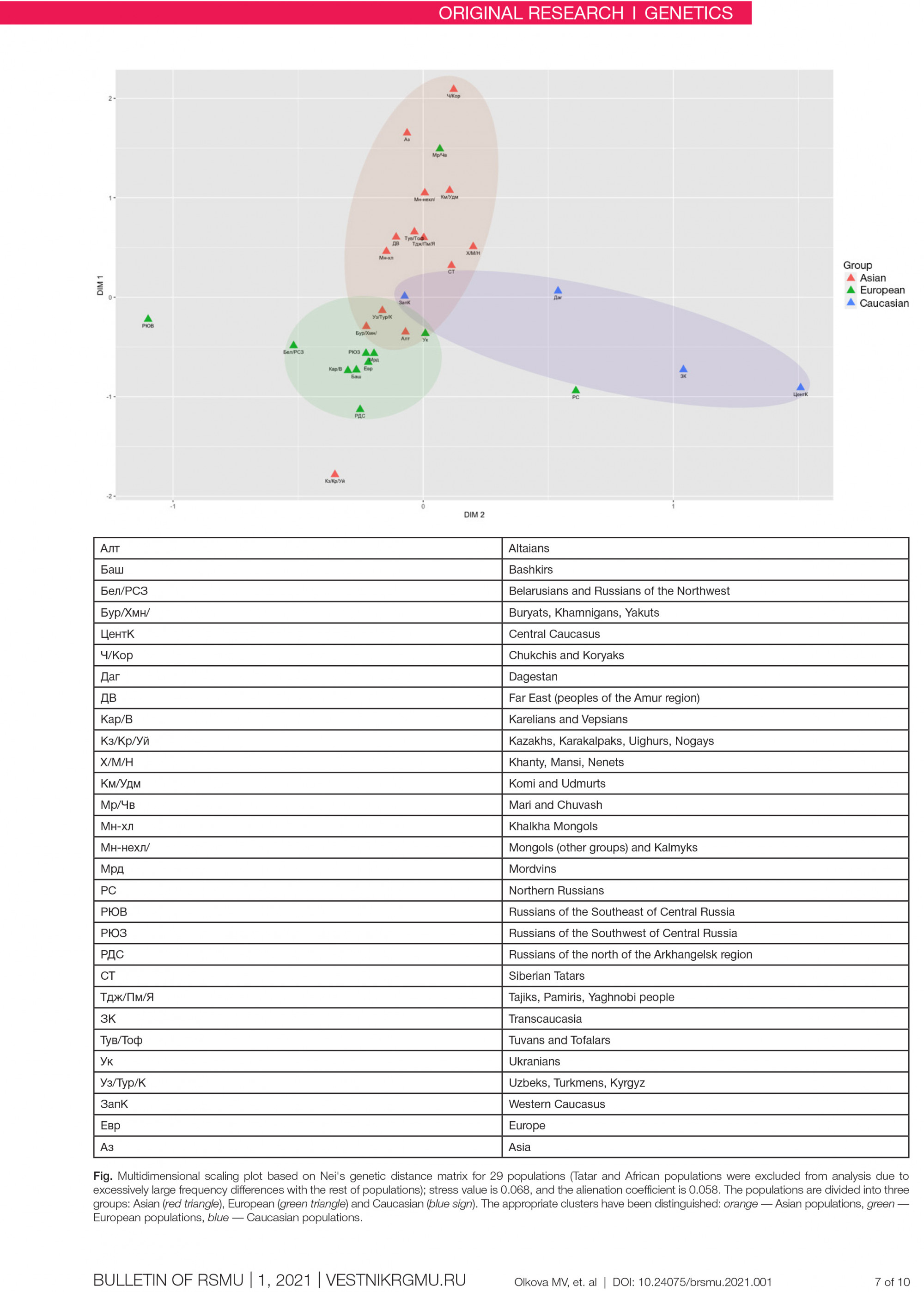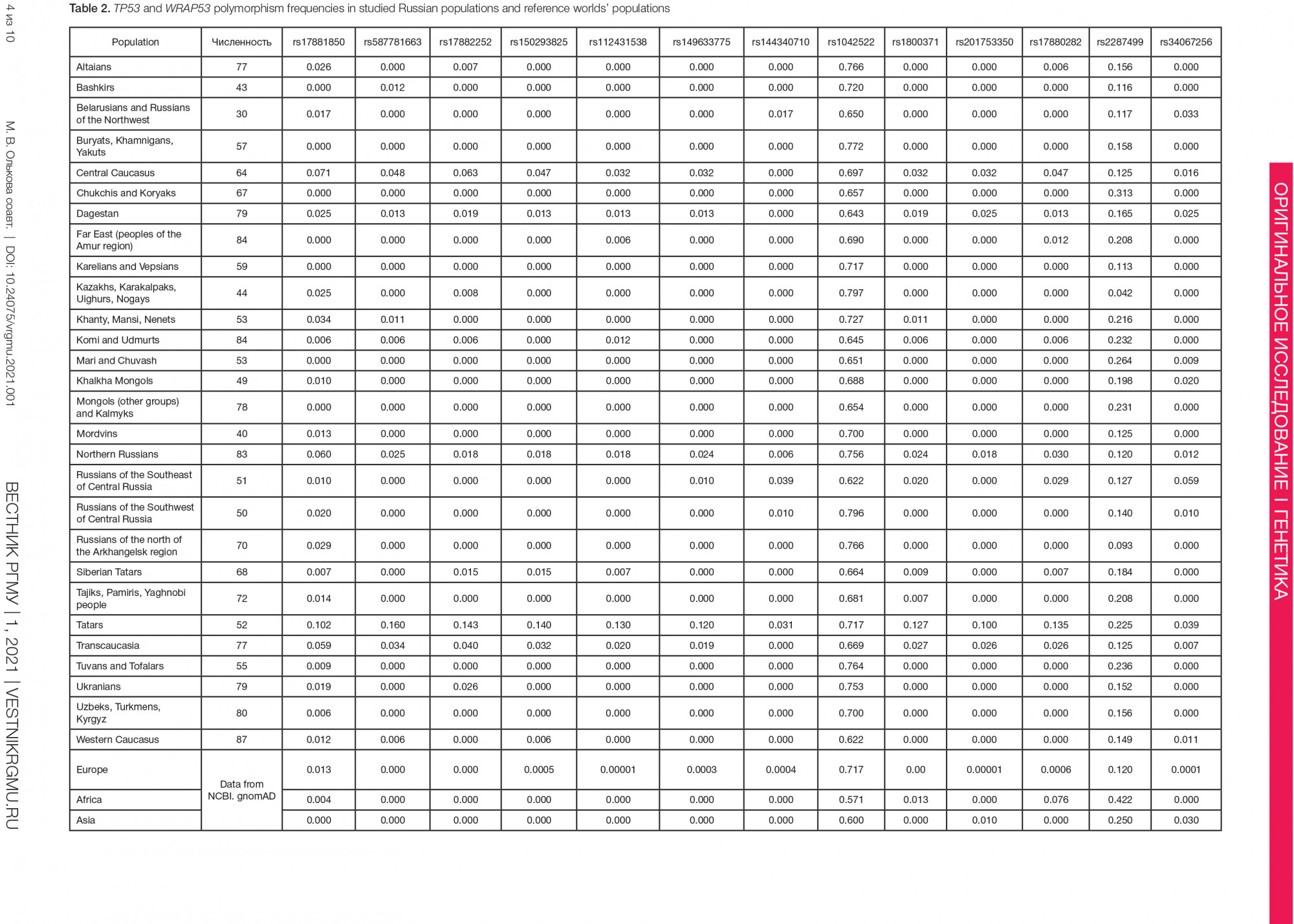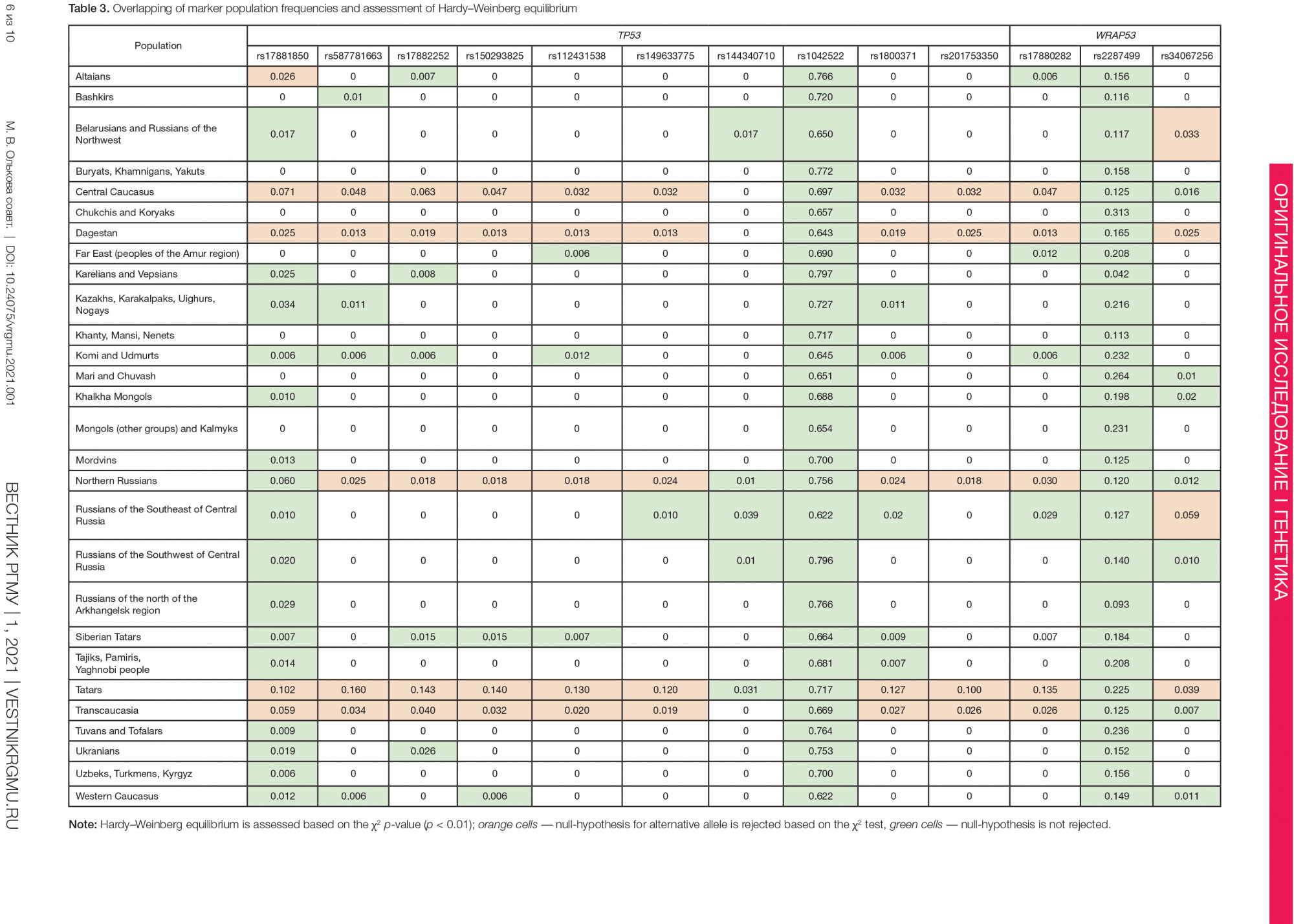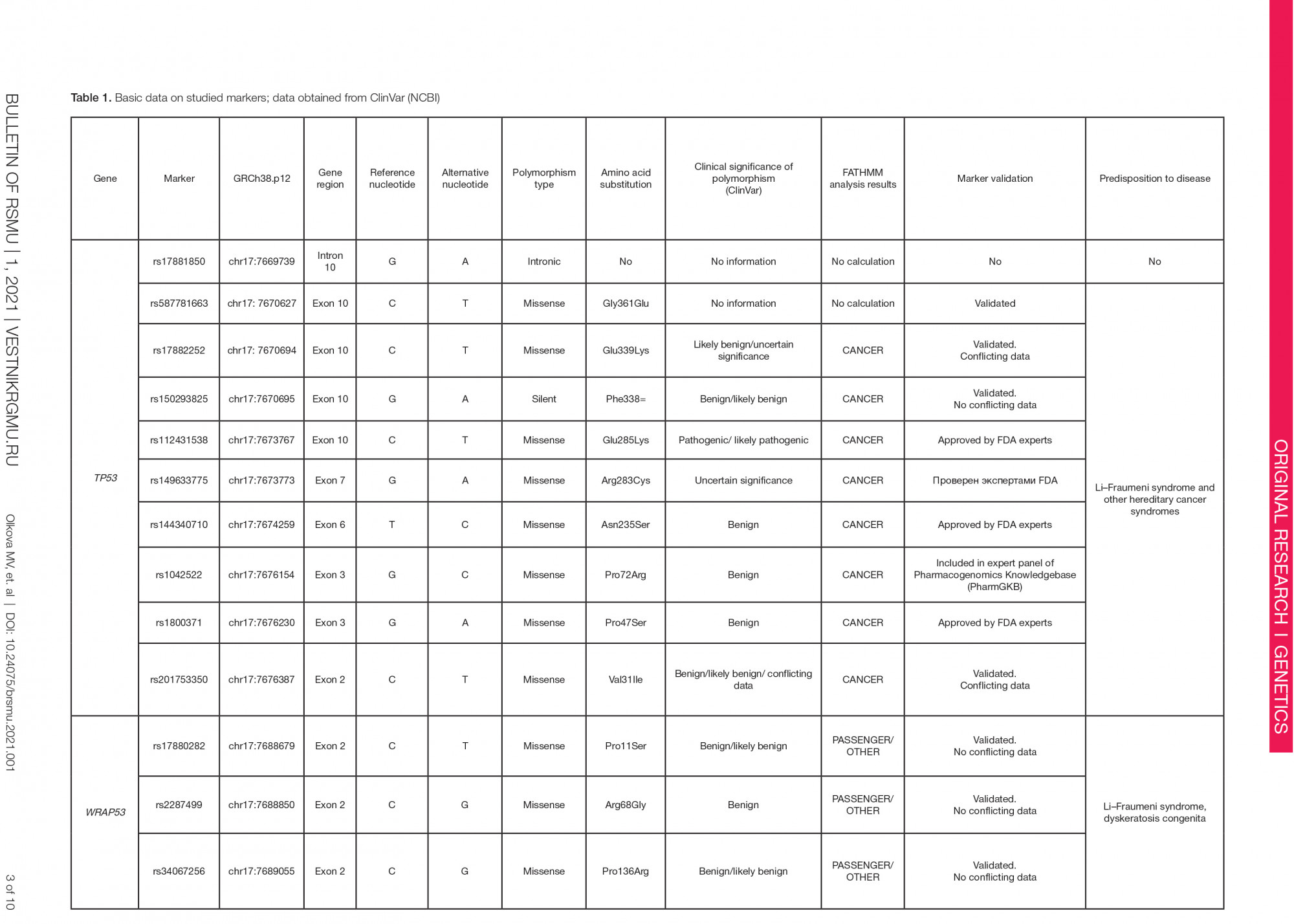
This article is an open access article distributed under the terms and conditions of the Creative Commons Attribution license (CC BY).
ORIGINAL RESEARCH
Analysis of 13 TP53 and WRAP53 polymorphism frequencies in russian populations
1 Research Centre of Medical Genetics (RCMG), Moscow, Russia
2 Vavilov Institute of General Genetics, Russian Academy of Sciences, Moscow, Russia
Correspondence should be addressed: Marina V. Olkova
Gubkina 3, Moscow, 119991; ur.xobni@sciteneg
Funding: the study was carried out as part of the public contract between the Ministry of Science and Higher Education of the Russian Federation and the Research Centre of Medical Genetics (phenotyping of samples, database construction, data analysis).
Acknowledgement: we would like to express our appreciation to Oleg Balanovsky, head of the Genome Geography Laboratory of the Vavilov Institute of General Genetics for study management and manuscript editing, to all DNA donors and Biobank of North Eurasia for provided collection of samples, as well as to the Center for Precision Genome Editing and Genetic Technologies for Biomedicine of the Pirogov Russian National Research Medical University (Moscow, Russia) for the opportunity to use the molecular biology technologies.
Author contribution: Olkova MV — study design, statistical analysis, manuscript writing; Petrushenko VS — bioinformatics analysis, Ponomarev GYu — experiments.
Compliance with ethical standards: the study was carried out in accordance with the World Medical Association Declaration of Helsinki. All samples were obtained from Biobank of North Eurasia. The informed consent was obtained from all donors.




